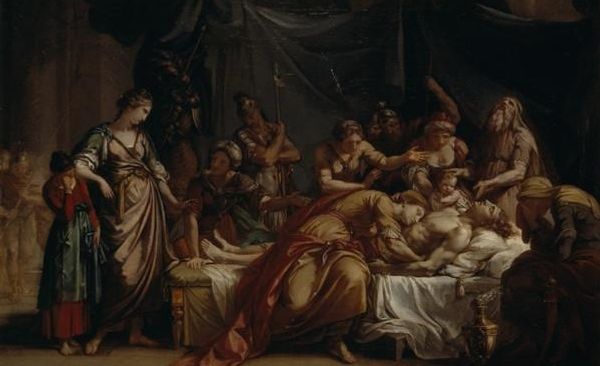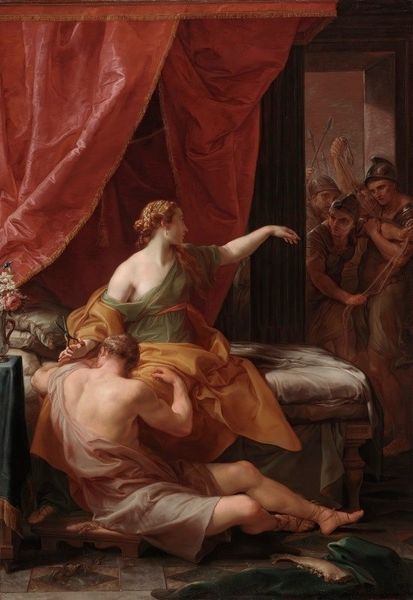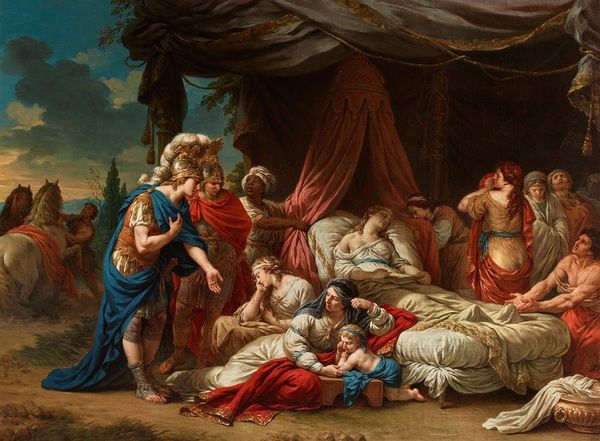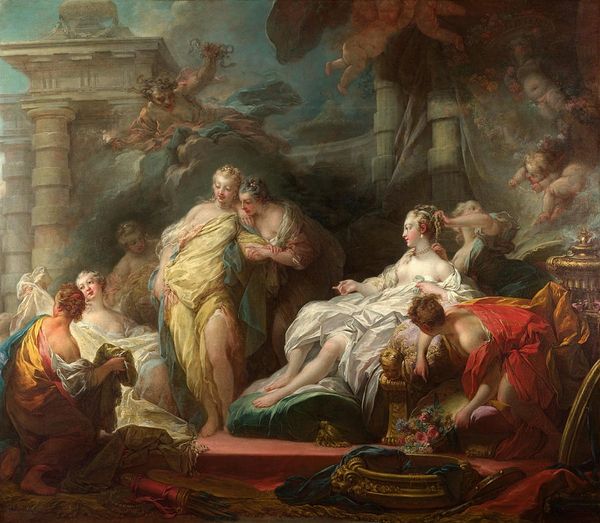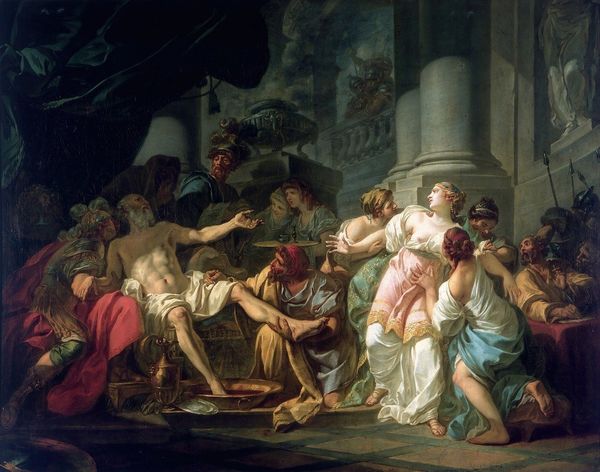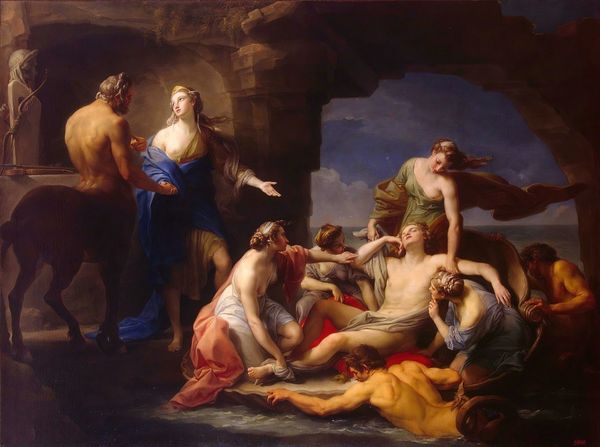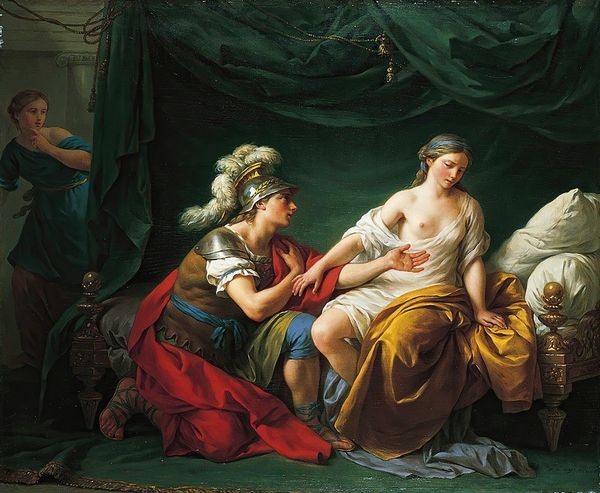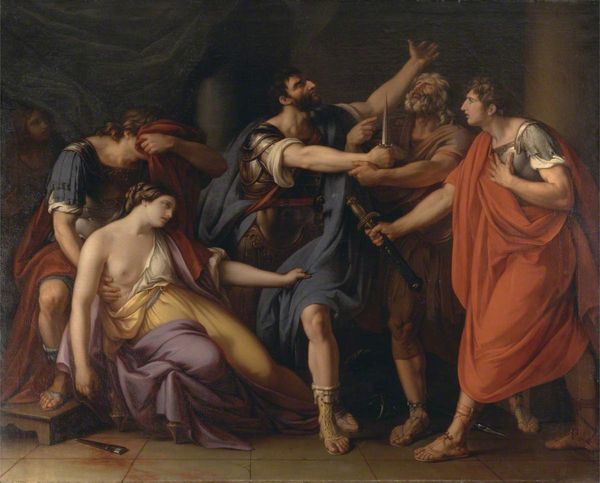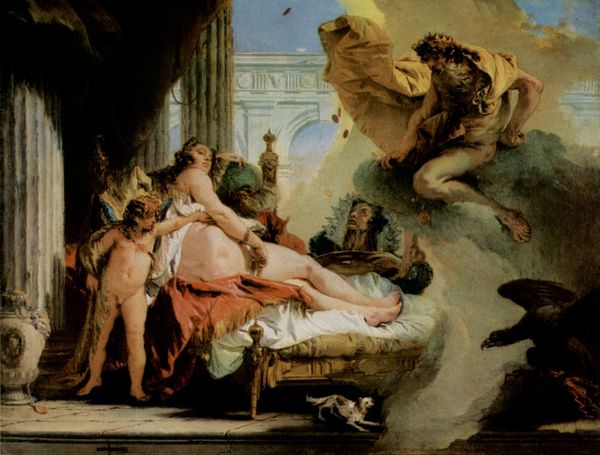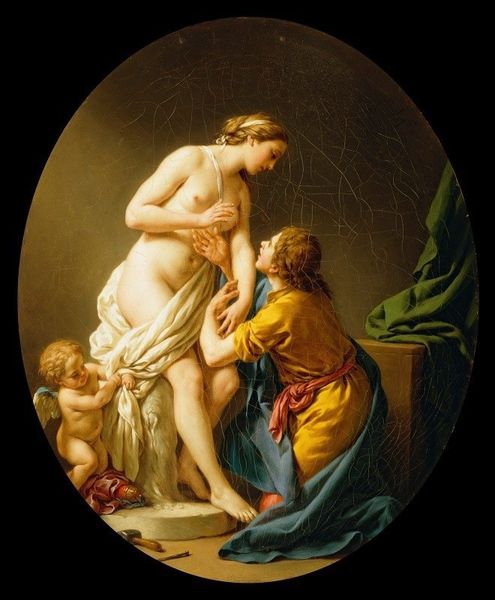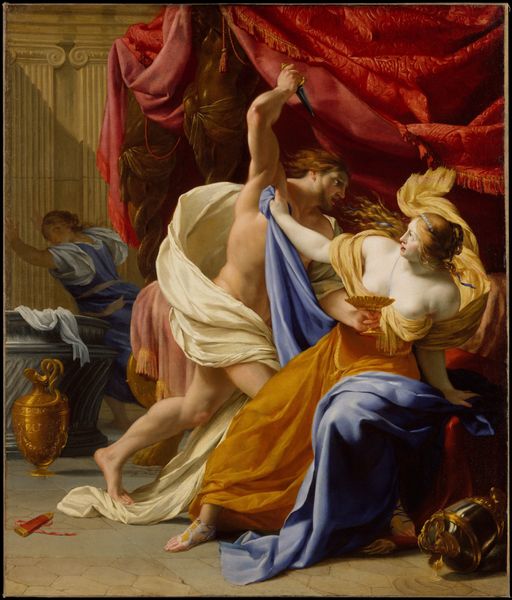
painting, oil-paint
#
neoclacissism
#
allegory
#
neoclassicism
#
painting
#
oil-paint
#
folklore
#
mythology
#
history-painting
#
nude
Copyright: Public Domain: Artvee
Editor: We're looking at "Pygmalion and his statue" painted in 1777 by Louis-Jean-François Lagrenée, rendered in oil on canvas. I'm immediately struck by its soft palette and the almost theatrical composition. It feels like we’re intruding on a very intimate moment. What cultural currents do you think influenced a painting like this? Curator: Considering this piece, the prevalent socio-political landscape certainly played a crucial role. This work comes squarely from the Neoclassical period, a deliberate return to classical ideals fueled in part by the Enlightenment’s emphasis on reason and order, a pointed contrast with the Rococo’s frivolousness. Neoclassicism served as a powerful tool for communicating authority and morality, something the academies encouraged. Does the figure of Pygmalion as an artist add another dimension? Editor: Yes, definitely! He is an artist, after all, begging his creation to come to life. It’s like a commentary on the power of art itself. Do you think Lagrenée was consciously engaging with these themes of artistic creation? Curator: I believe so. During the Enlightenment, art was seen as a force capable of ennobling humanity and improving society. By depicting Pygmalion's sculpture coming to life, Lagrenée reinforces the idea that art has the potential to transcend the material world, even to alter reality, as myth suggests, which served the academy narrative that linked art with virtue. Does it make you reconsider your initial viewing of an "intimate moment"? Editor: Absolutely. Viewing it through this lens, the painting becomes a very self-aware statement about the role of art and artists in society at the time. The mythological context adds weight to that idea, it transforms the dynamic between artist and statue. It is not merely an infatuation with something beautiful, but it seems it is an assertion of artistic capability in an emerging society! Curator: Exactly! And notice the specific neoclassical elements, like the carefully modeled figures, the architectural setting, and the clarity of the composition. These choices all contribute to the overall message. Editor: This makes so much sense. I was initially focused on the intimate narrative, but it’s fascinating how a deeper understanding of the historical context transforms the whole piece. Curator: Indeed, art is not created in a vacuum. Recognizing the context allows us to fully appreciate the work's intended impact on its contemporary audience.
Comments
No comments
Be the first to comment and join the conversation on the ultimate creative platform.
